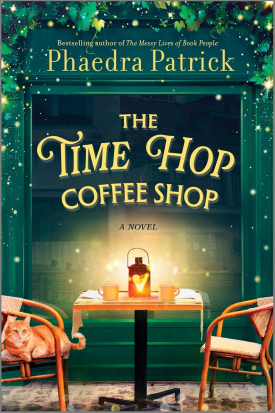Albert Camus Books In Order
Book links take you to Amazon. As an Amazon Associate I earn money from qualifying purchases.Publication Order of Standalone Novels
| The Outsider / The Stranger | (1942) | Description / Buy at Amazon |
| The Plague | (1947) | Description / Buy at Amazon |
| The Fall | (1957) | Description / Buy at Amazon |
| Exile and the Kingdom | (1958) | Description / Buy at Amazon |
| The Just | (1960) | Description / Buy at Amazon |
| Summer | (1968) | Description / Buy at Amazon |
| A Happy Death | (1971) | Description / Buy at Amazon |
| The Guest | (1992) | Description / Buy at Amazon |
| The First Man | (1994) | Description / Buy at Amazon |
Publication Order of Standalone Plays
| Caligula | (1944) | Description / Buy at Amazon |
| The Possessed | (1959) | Description / Buy at Amazon |
Publication Order of Collection of Plays
| Caligula and Three Other Plays | (1958) | Description / Buy at Amazon |
| Collected Plays | (1965) | Description / Buy at Amazon |
| The Plague, The Fall, Exile and The Kingdom and Selected Essays | (2004) | Description / Buy at Amazon |
Publication Order of Non-Fiction Books
| The Rebel | (1953) | Description / Buy at Amazon |
| The Myth of Sisyphus | (1955) | Description / Buy at Amazon |
| Algerian Chronicles | (1958) | Description / Buy at Amazon |
| Resistance, Rebellion and Death | (1961) | Description / Buy at Amazon |
| Lyrical and Critical Essays | (1967) | Description / Buy at Amazon |
| Neither Victims Nor Executioners | (1968) | Description / Buy at Amazon |
| Selected Essays And Notebooks | (1970) | Description / Buy at Amazon |
| Youthful Writings | (1976) | Description / Buy at Amazon |
| Cahiers II: Youthful Writings | (1977) | Description / Buy at Amazon |
| Notebooks 1935-1942 | (1978) | Description / Buy at Amazon |
| Correspondance, 1932-1960 | (1981) | Description / Buy at Amazon |
| Selected Political Writings | (1981) | Description / Buy at Amazon |
| Christian Metaphysics and Neoplatonism | (1985) | Description / Buy at Amazon |
| American Journals | (1987) | Description / Buy at Amazon |
| Between Hell & Reason | (1991) | Description / Buy at Amazon |
| Notebooks, 1942-1951 | (1991) | Description / Buy at Amazon |
| Notebooks 1951-1959 | (2008) | Description / Buy at Amazon |
| Create Dangerously | (2018) | Description / Buy at Amazon |
| Committed Writings | (2020) | Description / Buy at Amazon |
| Personal Writings | (2020) | Description / Buy at Amazon |
| Speaking Out | (2022) | Description / Buy at Amazon |
| Travels in the Americas | (2023) | Description / Buy at Amazon |
Publication Order of Short Story Anthologies
| San Francisco Stories | (1990) | Description / Buy at Amazon | ||
| Los Angeles Stories | (1991) | Description / Buy at Amazon | ||
| On Suicide: Great Writers on the Ultimate Question | (1992) | Description / Buy at Amazon | ||
| New Orleans Stories | (1992) | Description / Buy at Amazon | ||
| Chicago Stories | (1993) | Description / Buy at Amazon | ||
| Southwest Stories | (1993) | Description / Buy at Amazon | ||
| Florida Stories | (1993) | Description / Buy at Amazon | ||
| Lust: Lascivious Love Stories and Passionate Poems | (1994) | Description / Buy at Amazon | ||
| Alaska Stories | (1995) | Description / Buy at Amazon | ||
| Texas Stories | (1995) | Description / Buy at Amazon | ||
| San Francisco Thrillers | (1995) | Description / Buy at Amazon | ||
| Cape Cod Stories | (2002) | Description / Buy at Amazon | ||
+ Show All Books in this Series | ||||
| OOB: Anthology series. The author will have written at least one story in this series. | ||||
Publication Order of Anthologies
Albert Camus was a renowned author, journalist, philosopher, and a Nobel Prize winner from France. He was well known for writing fiction, philosophical, and cultural novels. Camus is known to have contributed to the progress of popular philosophy called absurdism. In his essay called The Rebel, Camus has written that in his entire life he opposed the nihilism beliefs and delved deep into the belief of individual freedom. Camus won the Nobel Prize when he was 44 years old and is the 2nd youngest individual to receive the prestigious award. He never classified himself as an existentialist, but others usually classified him to be so throughout his lifetime. In an interview given in 1945, Camus declared that he was not associated with any ideologies. Author Camus was born on November 7, 1913, in Mondovi, French Algeria. He studied at the Algiers University and completed his graduation in 1936. His mom was of the Spaniard descent, while his father was an agricultural worker of the French-Algerian descent.
After the death of his father due to injuries suffered in World War I, Camus and his mother lived in poverty. During his college time, Camus used to play football. But in 1930, he contracted tuberculosis and had to give up the sport. The disease also forced him to study on a part-time basis. In order to earn his livelihood, Camus had to take up odd jobs like working as a clerk, private tutor, assistant, etc. In 1935, Camus joined the Communist Party in order to fight against the inequalities between the natives and Europeans in Algeria. However, he did not believe in the Marxist philosophy. When he joined the People’s Party of Algeria, there was a backlash from his former party and was eventually expelled. Following this, he associated himself with the anarchist movement. He also began writing for anarchist publications like La revolution, Solidaridad Obrera, Le Libertaire, etc. Camus did not believe in God and didn’t consider himself an athiest. Rather, he declared himself to be irreligious.
Camus published his first work in 1936 in collaboration with Yves Bourgeois, Alfred Poignant, and Jeanne-Paule Sicard. It was called Revolte dans les Asturies and concerned the revolt of Spanish miners that the Spanish government brutally suppressed. In 1937, Camus wrote his debut book and dedicated it to Jean Grenier. At the time of the Second World War, Camus became a part of a resistance cell called Combat. This cell published underground newspapers and worked against Hitler. After joining Combat, Camus started writing under the pseudonym of Beacuchard. He even became the editor of the paper in 1943. After Combat turned into a commercial newspaper in 1947, Camus decided to resign. In 1944, he was tasked with reporting the last fight that led to the liberation of Paris by the Allies.
When the US attacked Japan with atom bombs, Camus joined other French editors to express disgust and opposition publicly. When tuberculosis returned in 1949, Camus spent two years in seclusion and returned in 1951 to publish his book called The Rebel. In this book, Camus has given a philosophical analysis of revolution and rebellion. He has also rejected communist philosophy in the book. Camus’ views upset a number of his contemporaries and colleagues in France and also led to his split with the decorated philosopher, novelist, playwright, political activist, and a close friend of Camus, Sartre. The split depressed Camus after which he started translating plays. Later, he went on to write other books.
Throughout his life, Camus remained ambitious and active. With the money gained by winning Nobel Prize, Camus adapted Dostoyesvsky’s Demons for the stage. The play turned out to be a critical success and increased his popularity to a great extent. Camus had married twice in his lifetime. His first marriage with Simone Hie in 1934 ended due to infidelities on the part of both Camus and Simone. In 1940, he married a mathematician and pianist named Francine Faure. The two had twins Jean and Catherine. Outside his marriage, Camus had several affairs including the one with a Spanish actress named Maria Casares. Camus breathed his last on January 4, 1960, after he was involved in a car accident. Following his death, his widowed wife and children gained his works’ copyrights.
A popular book penned by author Albert Camus is entitled ‘The Plague’. It was released in 1947. This book describes the tale of a plague that spread in the French-Alergian city called Oran. Through this book, Camus has asked several questions related to the human condition and destiny’s nature. Camus has mentioned a wide range of characters in the book, including vacationers, doctors, fugitives, etc. The novel’s story is believed to be inspired by a cholera epidemic that spread in Oran in 1849 and killed a large population. Camus has set the story in the 1940s. Some of the essential characters depicted in the book include Bernard Rieux, Jean Tarrou, Raymond Rambert, Joseph Grand, Cottard, Father Paneloux, etc. Bernard Rieix is shown as a doctor, who runs a hospital in Oran and treat patients during the plague by working long hours. He does everything in his capacity to save his patients, but knows in his heart that he cannot win against death. Jean Torrou is depicted as a good-natured, humble man. He puts forward the idea of dividing volunteers into multiple teams to fight the epidemic. The overall story is divided into 5 parts. It received critical success.
Another well-known novel written by Camus is known as ‘A Happy Death’. The novel was originally written in French. It was published posthumously and was translated into English in 1972 by Richard Howard. This book’s topic is based on the willingness to be happy in all situations. It is told in two parts and revolves around the lives of the central characters named Patrice Mersault, Roland Zagreus, Marthe, Lucienne, etc. Initially, Patrice Mersault is shown as having an empty and monotonous life. He works an office job and has a meaningless and untrustworthy relationship with a girl named Marthe. Patrice comes in contact with Roland Zagreus, who helps him get out of his miserable life. After gaining enormous wealth, Patrice goes on a European trip. In spite of traveling to numerous beautiful places, Patrice doesn’t peace. He comes back to Algiers and enters into marriage with a pleasant lady. Patrice eventually dies after fighting with illness. His widow thinks that he died a happy death.
Book Series In Order » Authors »


 Any issues with the book list you are seeing? Or is there an author or series we don’t have? Let me know!
Any issues with the book list you are seeing? Or is there an author or series we don’t have? Let me know!